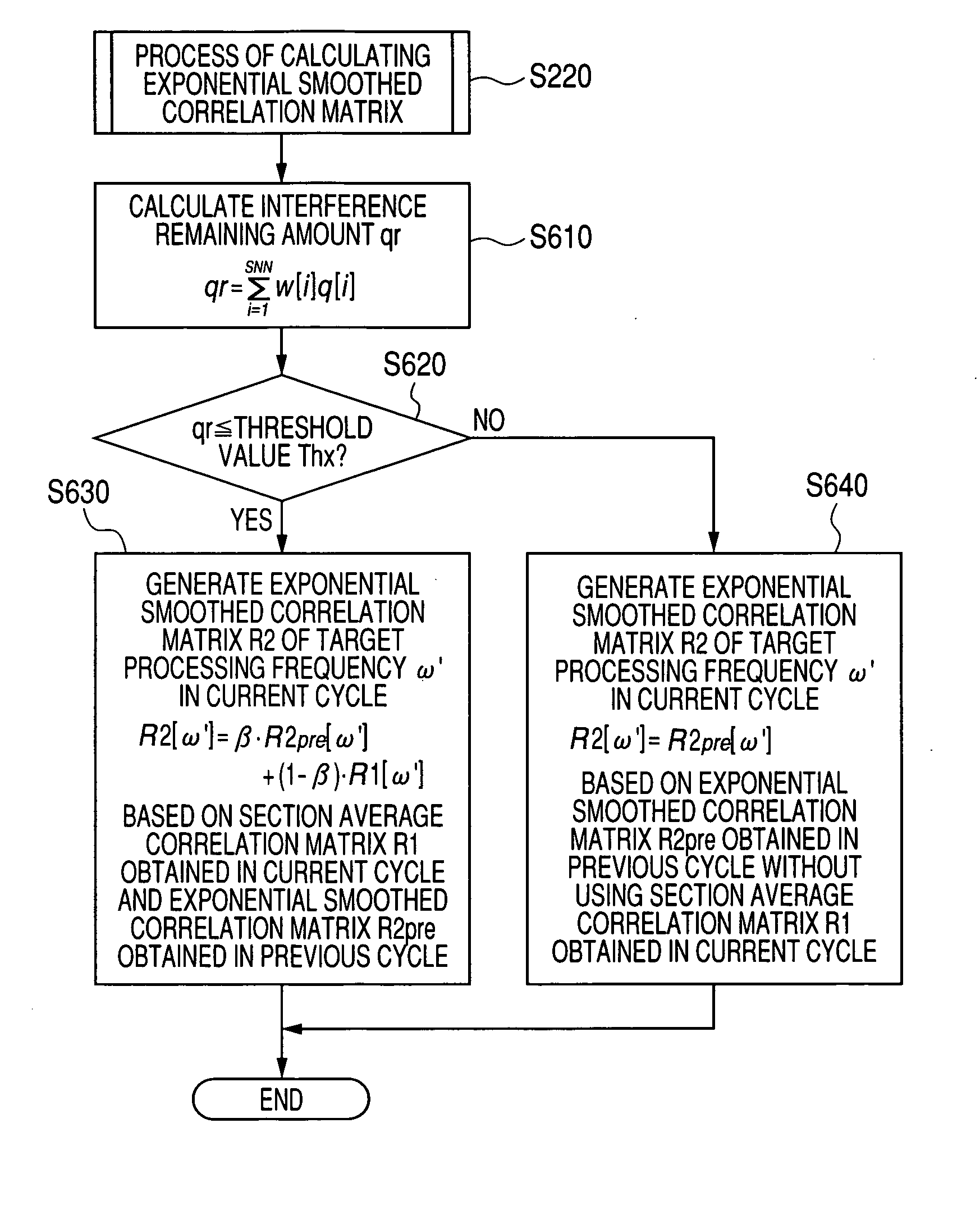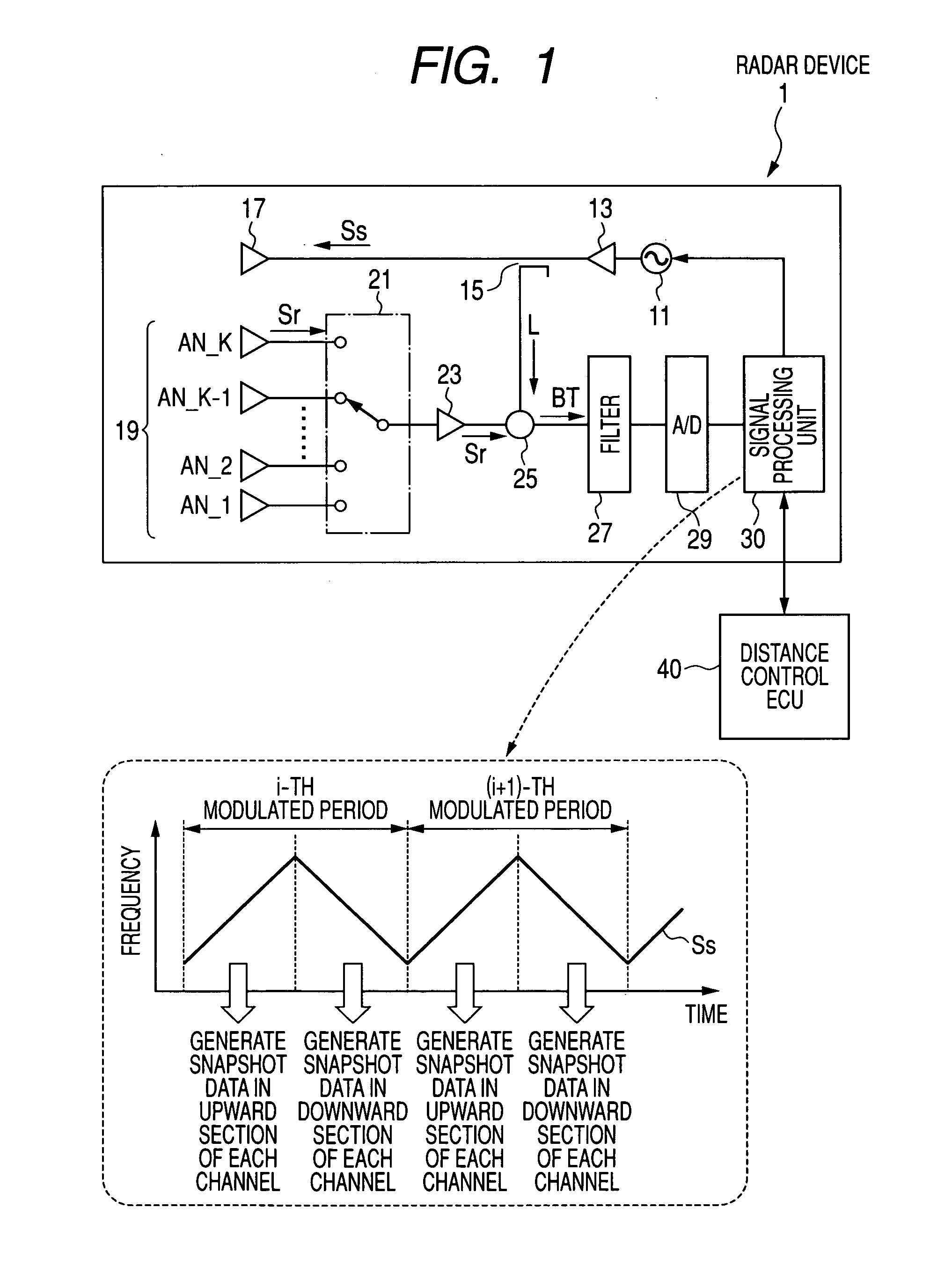Radar device
a technology of radar and target information, applied in the direction of measurement devices, multi-channel direction-finding systems using radio waves, instruments, etc., can solve the problem of reducing the accuracy of detecting target information, and achieve the effect of high accuracy
- Summary
- Abstract
- Description
- Claims
- Application Information
AI Technical Summary
Benefits of technology
Problems solved by technology
Method used
Image
Examples
first embodiment
[0076]A description will be given of the radar device according to the first embodiment of the present invention with reference to FIG. 1 to FIG. 4.
[0077]FIG. 1 is a block diagram showing the structure of the radar device 1 according to the first embodiment of the present invention.
[0078]As shown in FIG. 1, the radar device 1 according to the first embodiment is a FMCW (Frequency Modulated Continuous Wave) type on-vehicle radar device. The radar device 1 is mainly comprised of an oscillator 11, an amplifier 13, a splitter 15, a transmitting antenna 17, and a receiving antenna 19 composed of K antenna elements (K is a positive integer). The oscillator 11 generates a high frequency signal in the millimeter wave band, the frequency of which is linearly and gradually decreased with the elapse of time. The amplifier 13 amplifies the high frequency signal generated by the oscillator 11. The splitter 15 splits the electric power of the output signal supplied from the amplifier 13 into a tr...
second embodiment
[0186]A description will be given of the radar device according to the second embodiment of the present invention with reference to FIG. 5.
[0187]FIG. 5 is a flow chart showing another process of calculating the weighting coefficient performed by the signal processing unit 30 in the radar device 1 according to the second embodiment of the present invention.
[0188]The signal processing unit 30 in the radar device 1 according to the second embodiment performs the weighting coefficient calculating process S160-1 which is different in operation from the weighting coefficient calculating process of step S160 in the first embodiment. Because other operations of the second embodiment are the same as those in the first embodiment, the explanation of the same processes is omitted here for brevity.
[0189]In the second embodiment, one of K channels from the first channel to the K-th channel is used as a representative channel which is determined in advance in the design work.
[0190]When starting t...
third embodiment
[0202]A description will be given of the radar device according to the third embodiment of the present invention with reference to FIG. 6.
[0203]Because the processes of the third embodiment other than the weighting coefficient calculating process performed in step S160 are same as those in the first embodiment, the weighting coefficient calculating process will be mainly explained.
[0204]FIG. 6 is a flow chart showing another process of calculating the weighting coefficient performed by the signal processing unit in the radar device 1 according to the third embodiment.
[0205]When starting the weighting coefficient calculating process shown in FIG. 6, the signal processing unit 30 executes the series of steps S510 to S560, like the first embodiment. When the detection result in step S550 indicates that the variable i=SNN (“Yes” in step S550), the operation flow progresses to step S572. In step S572, the signal processing Unit 30 calculates the weighting coefficient w[i] by the followin...
PUM
 Login to View More
Login to View More Abstract
Description
Claims
Application Information
 Login to View More
Login to View More - R&D
- Intellectual Property
- Life Sciences
- Materials
- Tech Scout
- Unparalleled Data Quality
- Higher Quality Content
- 60% Fewer Hallucinations
Browse by: Latest US Patents, China's latest patents, Technical Efficacy Thesaurus, Application Domain, Technology Topic, Popular Technical Reports.
© 2025 PatSnap. All rights reserved.Legal|Privacy policy|Modern Slavery Act Transparency Statement|Sitemap|About US| Contact US: help@patsnap.com



